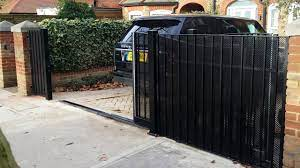Architectural salvage: essential to sustainability
Although it would be great to be able to keep historic materials in their original contexts, this is not always possible. These materials might have to be removed for structural reasons and there may be no suitable modern alternatives; for example, technology may have changed, a quarry may no longer produce a particular stone, or a particular type of timber may have become endangered. It seems that there is a clear need to reclaim and reuse these materials as much as we can.
Sustainability
The environmental impact of making new building materials is obviously far greater than that of reusing existing materials. Bricks especially are a high carbon item; however, they have a long lifespan and if we can save and reuse them, we can extract the maximum value from the carbon we have put into them.
When it comes to timber, older materials are often of far better quality. Most timber today comprises fast-growing softwoods, whereas the timber used in Britain’s historic buildings tended to be a native hardwood or slow-grown softwood. Modern hardwoods are usually expensive and are often linked to legally questionable and unsustainable forestry; therefore, salvaging and reusing timber wherever possible makes sense.
Reclamation and salvaging
Today, there are hundreds of suppliers in the UK specialising in reclaimed building materials, with items ranging from single bricks and roof tiles to huge fireplace fronts and even staircases. Some, such as http://www.periodhomesni.com/products/architectural-antiques.html, list their products online.
It is important to stay responsible when there are plans to use reclaimed materials, as these materials are part of a dwindling set of resources we should be protecting for future generations. Sourcing materials carefully is a vital part of this.
If you are ever unsure about the provenance of any reclaimed item you are thinking of buying, check for theft alerts on SalvoWEB to see whether anything similar has been stolen in the area. Lead roof tile thefts have been widely reported recently, such as those in Cambridgeshire, and even bricks and stone can be stolen from roadside walls, such as those round cemeteries.
Ultimately, if we don’t reuse these materials, we might lose them forever. Fortunately, the fact that historic materials have been set loose from their original context does not mean that no one will have a use for them.

















